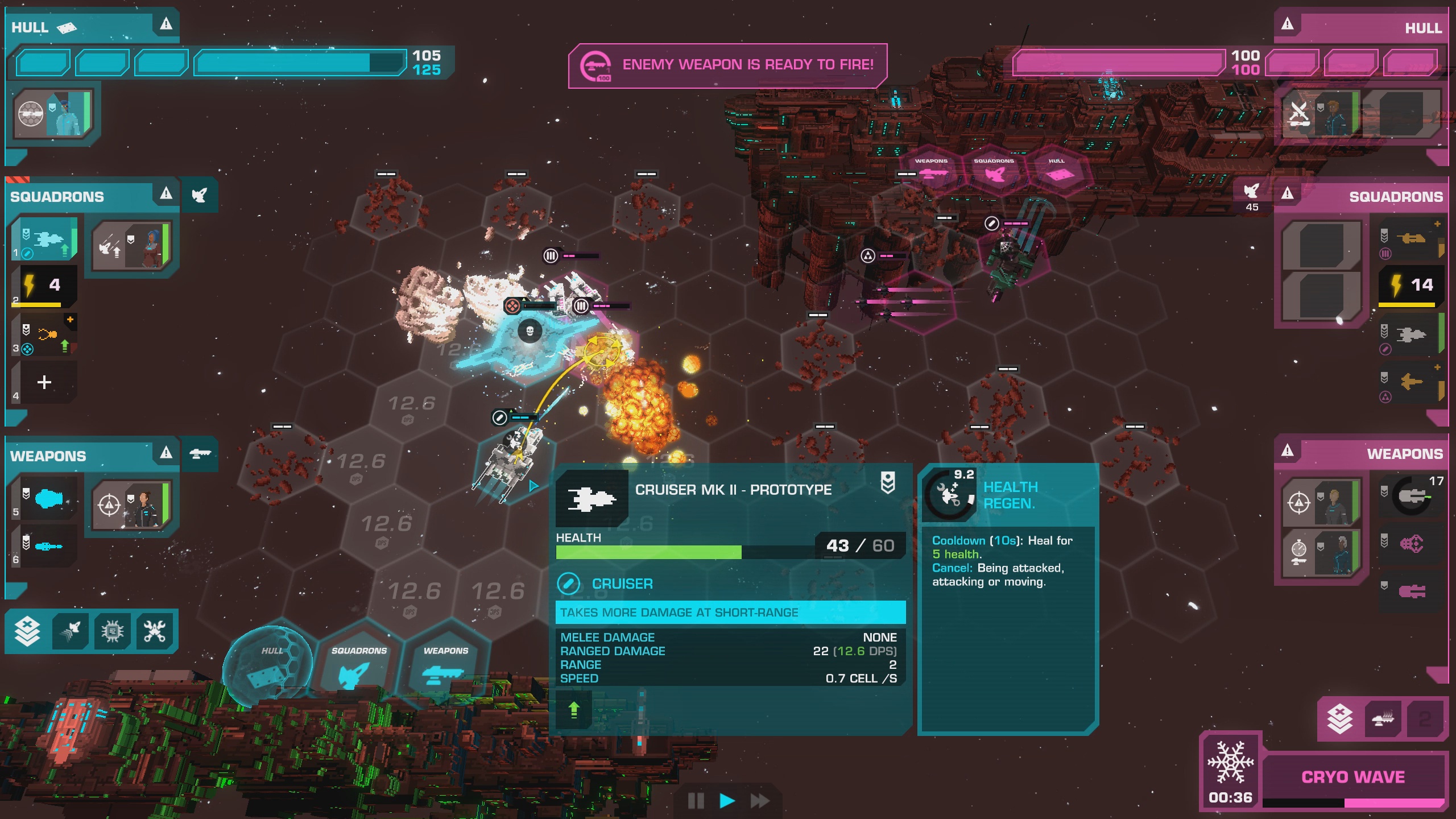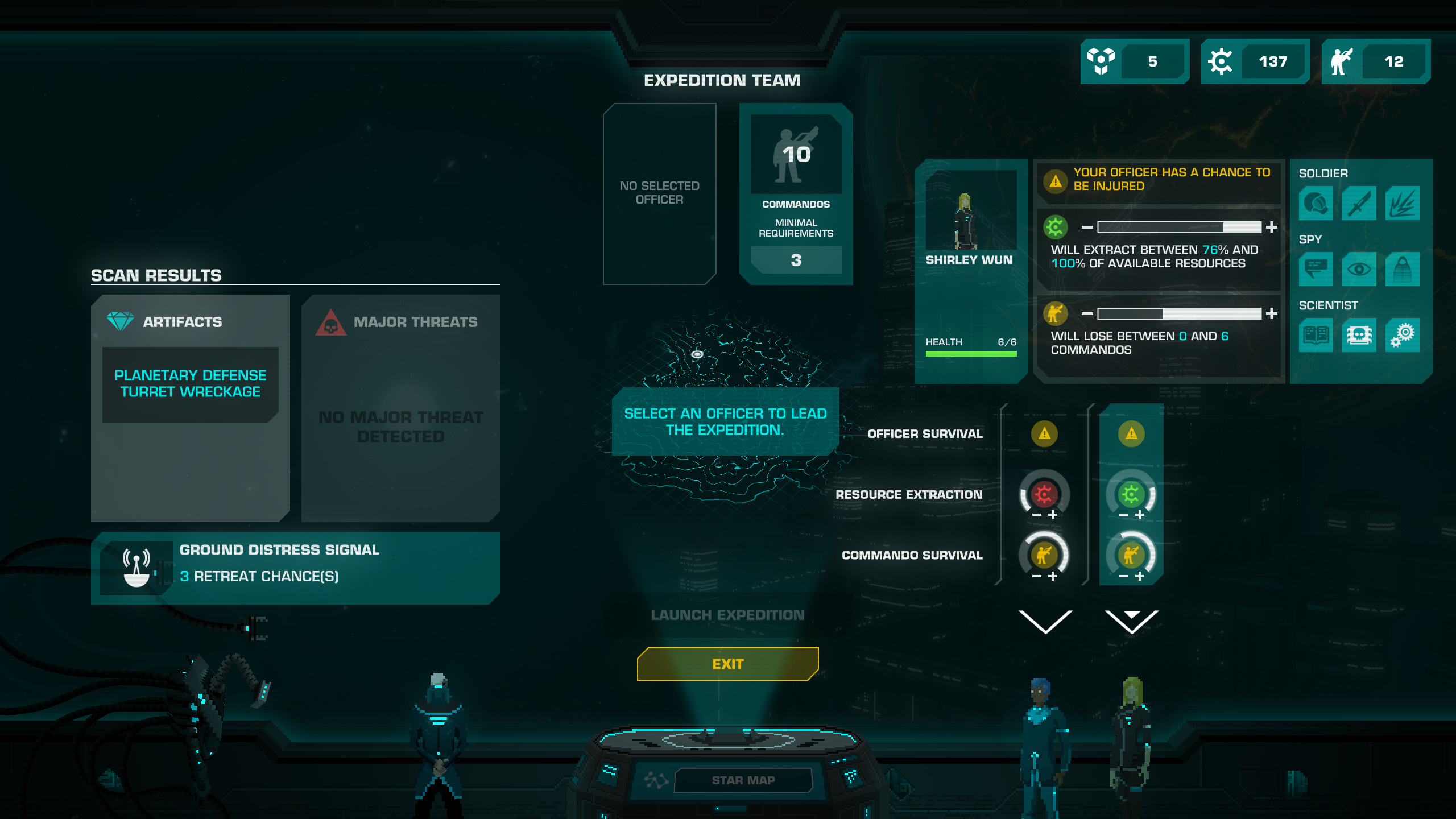7 things you should know about Crying Suns, the new FTL-inspired roguelike
Crying Suns is merciless but these tips will help you survive your bloody journey through space.
Above: Here's 10 minutes of uncut Crying Suns combat gameplay.
Crying Suns is a lot like FTL but with a much bigger emphasis on story and RTS-inspired combat, and it's great. You race from solar system to solar system, encountering random events, battling enemy spaceships, and trying your hardest to keep your crew and fighter squadrons alive. And just like FTL, that's all a lot harder than it seems. You're going to die a lot on your journey to figure out why a 700-year-old space empire has collapsed into chaos overnight.
That's half of the fun of any roguelite, but there's a lot to learn before you'll be a capable captain able to survive even the first chapter of the story. We'll have our full review of Crying Suns early next week, but in the meantime these tips should help make your roguelike runs in the vacuum of space less disastrous.
Spend all your resources before the final sector boss
Unlike FTL, which requires you to brave eight consecutive sectors full of random encounters before challenging the final boss, Crying Suns breaks its campaign up into five chapters that each have three sectors. Each sector will have a dozen or so star systems you can explore as long as you stay well ahead of the enemy fleets chasing you.
But each of these three-sector chapters is like a self-enclosed run, and when you beat one you'll start over from scratch in the next sector. While that can be frustrating if you're lucky enough to be flying a particularly well-fitted ship, it also means you shouldn't hold anything back for the final boss battle of each chapter (which always happens in sector three). Before you engage the chapter's boss, spend all your scrap on whatever upgrades you can. Every little bit helps, but be sure to prioritize upgrades that'll actually influence the battle ahead. Don't spend what precious scrap you have left on upgrades that fall under "subsystems" since those are helpful only in non-combat scenarios.
Boomer drones actually kick ass
Early on, one of the most effective loadouts I've discovered is loading up on Boomer drones along with upgrades that lower the respawn rate of your squadrons. When boomer drones die, they explode and deal damage to all nearby units. When coupled with any upgrades or auxiliary systems that decrease their respawn time, you can quickly field an army of kamikaze drones to overwhelm your enemy.
After beating chapter two, you'll unlock the Kaos class battleship which specializes in this tactic by giving you a hangar full of boomer drones. The trick, though, is to never repair those boomer drone squads in between fights. While it might sound like a good idea, repairing them restores their maximum HP to full—and we want them to die quickly so they can blow up enemy squads at the same time.
The biggest gaming news, reviews and hardware deals
Keep up to date with the most important stories and the best deals, as picked by the PC Gamer team.
Experiment with all the other weapons
Like boomer drones, it's easy to write off different battleship weapons and squadrons as useless. The sub-zero gun, which temporarily freezes enemies in place for a few seconds, feels particularly toothless compared to other weapons that deal devastating amounts of damage. But that's because weapons and squadrons often combo together in clever and destructive ways.
Cruisers, for example, feel particularly fragile since they can only attack enemies one space away and most enemy squads can quickly get in close and destroy them. But when you pair cruisers with thesub-zero gun you can freeze those incoming squads in place and let your cruiser quickly mop them up. It's tempting to only go for weapons that do raw damage, but it's better to carefully consider your existing arsenal and how you can manipulate the battlefield to your advantage.

Look before you jump into a new solar system
Unlike FTL, where each point in a sector represents a single random encounter, Crying Suns has solar systems with several points of interest you can warp to (for a cost). Some of these will be merchant stations or planetary excursions—or dozens of other events—but you should always pay careful attention to anomalies.
Represented by a yellow checkmark, anomalies represent either really good or really bad events and they can appear on top of any point of interest, creating a kind of roadblock you have to first clear before getting to the actual encounter. They're risky, so you should only take one on if you're confident you can handle whatever they throw at you (usually they trigger a really tough fight). Be warned,anomalies can spawn on the star that you automatically warp to when first entering a solar system,forcing you to deal with the anomaly immediately. If you have the choice between two systems and one of them has an anomaly on its star, it might be better to avoid that system altogether.
Do the math on planetary excursions
One of the unique features in Crying Suns is the ability to send a squad of soldiers to a planet's surface to scourge for resources and rare loot. These missions play out passively, with you deciding at certain points whether to press on and potentially endure more casualties or pull out early and leave behind whatever valuables you might've found. It's often tense, but don't let the game fool you into thinking your squad matters that much.
Look, I might be an asshole captain, but soldiers are an expendable resource that can be bought from most trade stations for 10 scrap—dirt cheap. When a planetary excursion says you might lose five to ten of them, it's worth doing the math on what you can get in return.
Before disembarking on the excursion, you have to send one of your officers to lead your squad of commandos. The game will tell you each officer's chances of acquiring rare loot and keeping your squad alive. Assuming your odds of earning good loot are high, you can expect to return with around 100 scrap—in addition to any valuable weapons or ship upgrades you might find. Even losing a full squad of 10 soldiers is worth it if you return home with well over 100 scrap worth of gear. So ignore your conscience for now, you can always replace soldiers later.

Plan for enemy reinforcements
During combat against enemy battleships, it's common for extra enemy reinforcements to spawn on the field periodically. In the bottom-right portion of the screen a countdown timer will let you know how long you have while the tiles where these extra units will spawn glow faint purple. During the chaos of combat, it's easy to ignore these warning signs but you should always prepare to be on the defensive—especially if these reinforcements arrive at the same time that your enemy's own squadrons replenish.
During those moments, it's easy to be overwhelmed by the rush of enemy units flooding your screen. To survive, it's better to position your own squadrons defensively and save your battleship weapons for when you really need them. If you can, try and set up ambushes using long-range cruisers to immediately attack enemy reinforcements the moment they spawn and before they have a chance to respond. And always make use of this final tip…
You can hit multiple enemies with one shot if you time it right
Normally squadrons will spread out so as not to stack up on a single tile, but there's a bit of leeway there you can exploit to your advantage. If the enemy has several squadrons rushing you, they'll often overlap,giving you a perfect window to kill two birds with one stone. When this happens, you can pause combat to line up a perfect shot that'll strike both enemy squadrons. This works with any battleship weapon. Using the sub-zero gun, for example, you can freeze two enemies in place instead of just one.
Be careful, though, because the enemy will also use this against you. When positioning your units, do your best to make sure they'll never overlap or you'll take unnecessary damage—which can too often be the difference between life and death.
With over 7 years of experience with in-depth feature reporting, Steven's mission is to chronicle the fascinating ways that games intersect our lives. Whether it's colossal in-game wars in an MMO, or long-haul truckers who turn to games to protect them from the loneliness of the open road, Steven tries to unearth PC gaming's greatest untold stories. His love of PC gaming started extremely early. Without money to spend, he spent an entire day watching the progress bar on a 25mb download of the Heroes of Might and Magic 2 demo that he then played for at least a hundred hours. It was a good demo.


